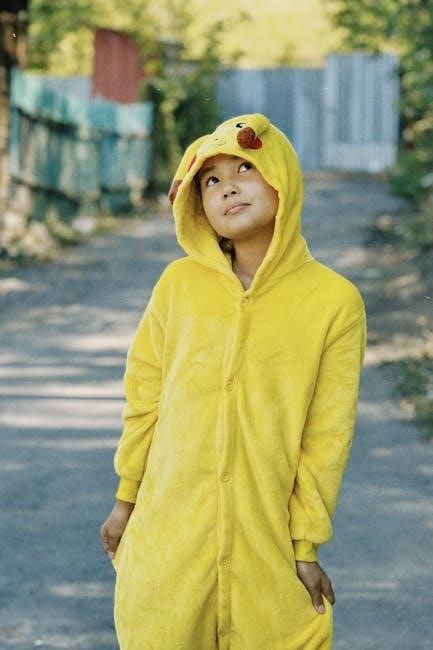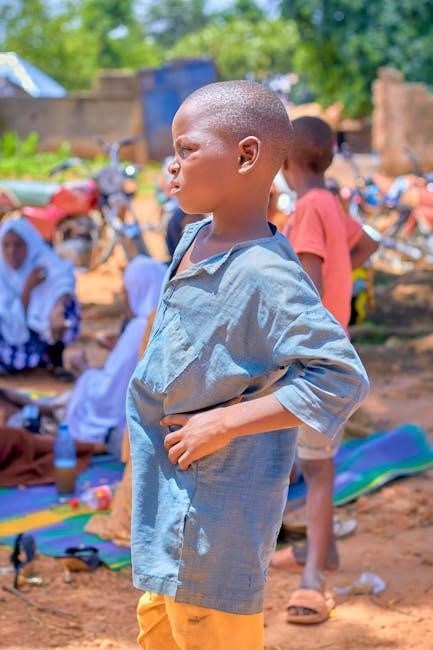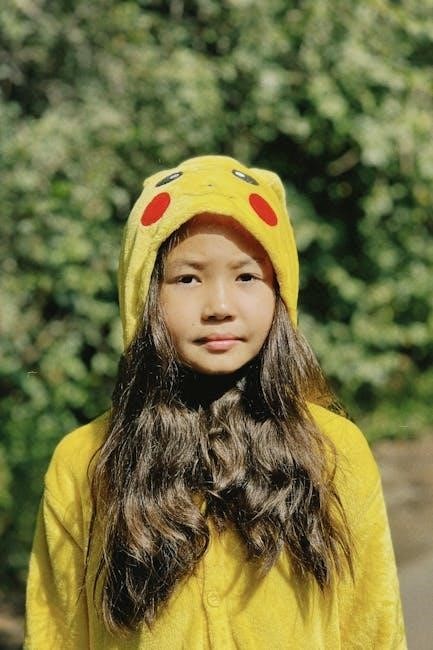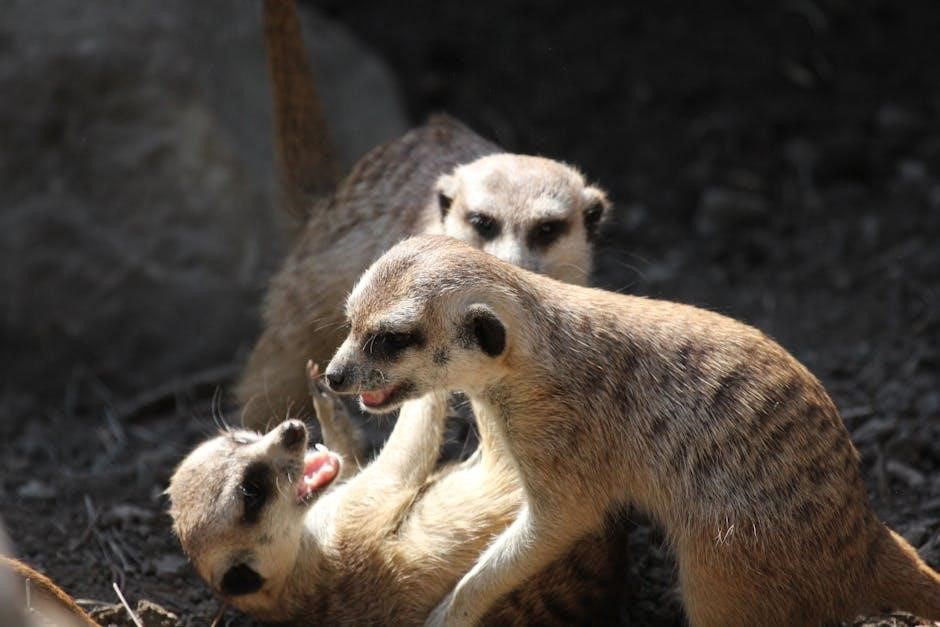Hurricane Diane, a play by Madeleine George, premiered at Two River Theatre in 2017. Blending comedy and satire, it reimagines Dionysus as Diane, a charismatic gardener advocating environmental restoration in suburban New Jersey.
1.1 Overview of the Play
Hurricane Diane, an Obie-winning comedy by Madeleine George, reimagines Dionysus as Diane, a permaculture gardener with supernatural powers. Premiering at Two River Theatre in 2017, the play blends satire and humor to address climate change and societal norms. Diane’s mission to restore Earth’s natural balance unfolds in suburban New Jersey, where she encounters four housewives. The play uses wit and absurdity to critique modern complacency, offering a fresh take on environmentalism and human disconnection from nature. Its unique blend of mythology and contemporary issues makes it a compelling commentary on our times.
1.2 Background and Historical Context
Hurricane Diane is a modern adaptation of Euripides’ The Bacchae, reimagining Dionysus as Diane, a permaculture gardener with supernatural abilities. Premiering in 2017 at Two River Theatre, the play draws on Greek tragedy while addressing contemporary issues like climate change and gender roles. Madeleine George’s work reflects Euripides’ tradition of critiquing societal norms, blending humor and satire to explore human disconnection from nature. The play’s historical context lies in its classical roots, yet its themes of environmentalism and identity resonate strongly in today’s world, making it a unique fusion of ancient mythology and modern commentary.
1.3 The Role of Dionysus in Modern Interpretation
In Hurricane Diane, Dionysus is reimagined as Diane, a charismatic and androgynous permaculture gardener. This modern interpretation retains the god’s essence—charisma, supernatural power, and a penchant for liberation and chaos—while adapting it to contemporary themes. Diane’s role disrupts suburban monotony, challenging rigid gender norms and societal expectations. The character embodies both nature’s destructive and regenerative forces, symbolizing the clash between modernity and the natural world. This reinterpretation highlights Dionysus’s timeless relevance, blending mythology with modern issues like environmentalism and gender identity, making the ancient deity a powerful symbol of change and provocation in today’s society.
Plot Summary of “Hurricane Diane”
Diane, a modern Dionysus, arrives in suburban New Jersey, transforming lives with her wild charm. She challenges housewives to embrace nature and break free from societal constraints, sparking both transformation and chaos as she confronts the clash between modernity and the natural world.
2.1 The Setting: Suburban New Jersey
The play is set in suburban New Jersey, a seemingly idyllic landscape of neatly manicured lawns and comfortable homes. This setting serves as a backdrop for the tension between nature and modernity, as the arrival of Diane disrupts the routine of the suburban housewives. The contrast between the controlled, orderly environment of the suburbs and the wild, untamed presence of Diane highlights the central themes of environmentalism and societal constraints. The suburban setting also amplifies the comedic and satirical elements, as the characters’ lives are thrown into chaos by forces beyond their control.
2.2 The Transformation of Dionysus into Diane
In “Hurricane Diane,” the ancient Greek god Dionysus is reimagined as Diane, a charismatic and androgynous landscaper in suburban New Jersey. This modern adaptation retains Dionysus’s wild, disruptive essence while embedding it in a contemporary queer identity. Diane’s transformation symbolizes the clash between nature’s untamed power and the controlled, artificial environment of suburbia. The character’s fluid gender identity and magnetic charm challenge the housewives’ conventional lives, blending humor with deeper explorations of societal norms and environmental decay. This reinterpretation of Dionysus highlights the play’s themes of identity, nature, and the subversion of modern expectations.
2.3 The Interaction with Suburban Housewives
Diane’s encounter with the suburban housewives sparks a dynamic interplay of seduction, humor, and introspection; Each woman—representing distinct archetypes of suburban life—responds uniquely to Diane’s charismatic presence. The character challenges their complacent routines, stirring suppressed desires and questioning their identities. Through witty dialogue and subtle manipulation, Diane exposes the cracks in their seemingly perfect lives. This interaction becomes a catalyst for both personal transformation and comedic tension, highlighting the contrast between their mundane reality and Diane’s wild, untamed energy. The relationships forged during these interactions drive the play’s exploration of societal norms and individual awakening.
2.4 The Climax and Resolution
The climax unfolds as Diane’s storm engulfs the suburban neighborhood, symbolizing the chaos and upheaval she has stirred within the housewives. The women are forced to confront their choices and desires, leading to a turning point where some embrace their true selves, while others retreat into familiarity. The resolution brings a sense of uneasy calm, with the storm subsiding but leaving a lasting impact. Diane’s presence fades, leaving the housewives to grapple with the aftermath. The play concludes with a poignant reflection on transformation, loss, and the enduring power of nature, both literal and metaphorical.

Characters in “Hurricane Diane”
Diane, the modern Dionysus, is the catalyst for change, while the four housewives represent distinct facets of suburban life, each grappling with identity and transformation.
3.1 Diane (Dionysus)
Diane, a modern reinterpretation of Dionysus, is a charismatic and androgynous figure who embodies the power of nature and transformation. With charm and wit, Diane challenges societal norms, particularly in suburban New Jersey. As a deity, Diane represents both destruction and renewal, using seduction and humor to provoke change. The character’s divine yet human-like qualities create a compelling dynamic, blending ancient mythology with contemporary issues. Diane’s presence sparks a confrontation with the monotony of suburban life, urging the housewives to embrace their true selves and question the status quo, making Diane a central force in the play’s exploration of identity and environmentalism.
3.2 The Four Housewives
The four housewives in Hurricane Diane are distinct yet interconnected characters, each representing different facets of suburban life and identity. They are drawn into Diane’s orbit, their lives disrupted by the god’s presence. Each woman embodies a unique archetype: the perfectionist, the free spirit, the pragmatist, and the idealist. Their interactions with Diane challenge their insecurities and societal expectations, forcing them to confront their desires and limitations. Together, they form a microcosm of human experience, their diverse perspectives enriching the play’s exploration of identity, community, and transformation. Their stories intertwine, creating a complex tapestry of struggles and revelations.
3.3 Supporting Characters and Their Roles
In Hurricane Diane, the supporting characters add depth and complexity to the narrative, each serving unique purposes. They include neighbors, family members, and symbolic figures who interact with Diane and the housewives. These characters often represent societal norms or challenges, contrasting with Diane’s divine influence. For instance, some embody traditional suburban values, while others symbolize the chaos Diane unleashes. Their interactions highlight the tension between conformity and transformation, enriching the play’s exploration of identity and societal expectations. Through their roles, these characters contribute to the overarching themes of environmentalism and gender dynamics, ultimately shaping the story’s progression and resolution.
Themes and Symbolism
Hurricane Diane explores themes of environmentalism, gender identity, and the clash between nature and modernity. These themes are intertwined with symbolic elements, creating a layered narrative.
4.1 Environmentalism and Climate Change
The play critiques humanity’s disconnection from nature, using Hurricane Diane as a metaphor for climate change. Diane, embodying an ancient, neglected deity, represents the Earth’s wrath against environmental abuse. Through the storm’s destruction, the play highlights the consequences of suburban sprawl and consumerism. The housewives’ obliviousness to ecological collapse mirrors societal complacency. Diane’s role as a force of nature underscores the urgency of sustainable change, urging characters—and audiences—to confront their role in environmental degradation. The storm serves as a wake-up call, blending myth and modernity to advocate for environmental stewardship.

4.2 Gender Roles and Identity
Hurricane Diane explores the rigid gender roles in suburban life, particularly through the housewives’ conformity to societal expectations. Diane, as a butch, charismatic gardener, challenges these norms, embodying a queer identity that disrupts the heteronormative bubble. The play satirizes the constraints of traditional femininity, as the housewives’ interactions with Diane force them to confront their own desires and identities. Diane’s presence sparks a journey of self-discovery, highlighting the tension between societal expectations and personal authenticity. The play critiques the limitations of gender roles while celebrating queer identity and its transformative power in breaking free from societal molds.
4;3 The Struggle Between Nature and Modernity
Hurricane Diane vividly portrays the clash between nature and modernity, with Diane embodying the untamed power of the natural world. The suburban setting, characterized by manicured lawns and climate-controlled homes, symbolizes humanity’s attempt to control nature. Diane’s arrival disrupts this illusion, forcing the housewives to confront the consequences of their detachment from the natural world. The play critiques modernity’s disregard for environmental balance, using Diane’s wild presence and the impending storm to highlight the futility of resisting nature’s force. This struggle mirrors contemporary concerns about climate change, urging a reevaluation of humanity’s relationship with the earth.

Dramatic Elements

The play masterfully blends comedy, satire, and supernatural elements, using Diane’s divine presence to explore themes of transformation and societal critique, while the garden serves as a symbolic centerpiece.
5.1 Use of Comedy and Satire
“Hurricane Diane” masterfully employs comedy and satire to critique societal norms and environmental complacency. Diane’s charismatic yet mischievous demeanor humorously challenges the suburban housewives, exposing their superficial lives. The play uses irony and absurdity to highlight the clash between modernity and nature, with Diane’s divine chaos contrasting the mundane routines of her human counterparts. Satirical elements mock consumerism and climate denial, while comedic moments provide relief and amplify the play’s biting commentary. This blend of humor and critique makes the play both entertaining and thought-provoking, urging audiences to reflect on their role in the environmental crisis.

5.2 Supernatural Elements in the Play
“Hurricane Diane” incorporates supernatural elements to explore themes of divine intervention and environmental upheaval. Diane, as the modern incarnation of Dionysus, possesses godly powers that disrupt the mundane lives of suburban housewives. Her ability to summon a storm and manipulate nature serves as a metaphor for humanity’s fragile relationship with the environment. The supernatural elements create a sense of unease and wonder, emphasizing the play’s central conflict between natural forces and human ignorance. These divine interventions also highlight Diane’s role as a catalyst for change, blending myth and reality to deliver a powerful message about environmental stewardship and personal transformation.
5.3 The Significance of the Garden
The garden in “Hurricane Diane” serves as a symbolic battleground between nature and suburban monotony. Diane’s landscaping business becomes a tool for her divine influence, transforming the garden into a space of both beauty and chaos. The garden represents the untamed power of nature, contrasting with the controlled, artificial lives of the housewives. Through her work, Diane awakens the women to the interconnectedness of life and the urgency of environmental action. The garden’s evolution mirrors the characters’ inner transformations, symbolizing the potential for growth, renewal, and rebellion against the constraints of modern society.
Production History
“Hurricane Diane” premiered at Two River Theatre in 2017, directed by Leigh Silverman. Its success led to productions in notable venues, earning critical acclaim and attention.
6.1 Premiere at Two River Theatre
“Hurricane Diane” made its world premiere at Two River Theatre in Red Bank, New Jersey, in 2017. Directed by Leigh Silverman, the production showcased the play’s innovative blend of mythology and modernity. The intimate venue provided an ideal setting for the play’s exploration of suburban life and environmental themes. The premiere received critical acclaim, with praise for its bold storytelling and strong performances. It marked the beginning of the play’s successful journey, setting the stage for future productions and earning recognition in the theatre community. This debut solidified its place as a groundbreaking work.
6.2 Notable Productions and Adaptations
Following its premiere, “Hurricane Diane” gained momentum with notable productions across the U.S. The Off-Broadway production at New York Theatre Workshop in 2019 further cemented its reputation, earning widespread critical acclaim. The play has also been staged at regional theaters, adapting its themes to resonate with diverse audiences. While no major film adaptation exists, discussions about a potential screen version have emerged, highlighting its cross-medium appeal. The play’s success lies in its ability to blend humor and urgency, making it a standout work in contemporary theatre; Its evolving productions continue to captivate audiences and inspire new interpretations.
6.3 The Obie Award and Recognition

“Hurricane Diane” received the prestigious Obie Award for Playwriting in 2019, recognizing Madeleine George’s innovative storytelling. The award highlighted the play’s bold exploration of environmental themes and its unique blend of humor and tragedy. This recognition boosted the play’s profile, drawing attention to its timely message about climate change and human disconnect from nature. The Obie Award solidified “Hurricane Diane” as a significant work in contemporary theatre, praising its originality and cultural relevance. This accolade has continued to influence productions and adaptations, ensuring the play’s enduring impact on both stages and audiences.

Critical Reception
Critics praised Hurricane Diane for its originality, blending humor with environmental themes. Audiences lauded its timely commentary and creative storytelling, solidifying its impact on contemporary theatre.
7.1 Reviews and Audience Feedback
Audiences and critics alike praised Hurricane Diane for its bold storytelling and timely themes. Many highlighted its ability to blend humor with profound environmental commentary, resonating deeply with viewers. The play’s unique take on Dionysus’s modern incarnation intrigued theatre-goers, sparking lively discussions post-show. Reviewers noted the strong ensemble performances and the playwright’s clever dialogue, which balanced satire with emotional depth. The production’s relevance to contemporary issues, such as climate change, was particularly commendable. Overall, the play received widespread acclaim for its originality and thought-provoking narrative, solidifying its place as a standout in modern theatre.
7.2 Analysis of the Play’s Message
Hurricane Diane delivers a powerful critique of modern society through its exploration of environmental degradation and gender identity. The play uses satire and mythology to highlight the consequences of humanity’s disconnection from nature. By transforming Dionysus into Diane, a charismatic landscaper, the story challenges suburban norms and consumerism. The play’s message underscores the urgency of climate action while celebrating queer identity and resistance. Its blend of humor and gravitas makes it a compelling commentary on contemporary life, urging audiences to confront their role in the planet’s future.

7.3 Comparisons with Other Works by Madeleine George
Madeleine George’s Hurricane Diane shares thematic ties with her earlier works, such as The Zero and Seven Homeless Mammoths Wander New England, which explore identity, human connection, and societal critique. Like these plays, Hurricane Diane blends humor with sharp commentary, tackling climate change and gender roles. However, Diane stands out for its bold use of mythology and its focus on environmental urgency. George’s signature wit and nuanced character development are evident, but the play’s scope and ambition mark a new direction in her oeuvre, solidifying her voice in contemporary theatre.

Cultural Impact
Hurricane Diane has sparked conversations about climate change and gender identity, influencing environmental theatre and inspiring new works addressing similar themes in contemporary society.
8.1 Influence on Environmental Theatre
Hurricane Diane has reshaped environmental theatre by blending mythology with climate urgency, inspiring playwrights to explore ecological themes through innovative storytelling. Its success has sparked a wave of eco-conscious performances, encouraging theatres to address sustainability and climate change. The play’s unique approach has challenged traditional narratives, offering a fresh perspective on humanity’s relationship with nature. By weaving Dionysus’s myth into modern environmental crises, it has become a benchmark for creative activism, influencing a new generation of artists to use theatre as a platform for environmental advocacy and social change.
8.2 Representation of LGBTQ+ Themes
Hurricane Diane boldly incorporates LGBTQ+ themes through its protagonist, Diane, a modern interpretation of Dionysus. The play explores gender fluidity and queerness, reflecting Diane’s androgynous identity and her disruption of suburban norms. By blending mythology with contemporary queer narratives, the play challenges traditional gender roles and celebrates non-conformity. Its satirical tone highlights the tension between societal expectations and personal identity, resonating with LGBTQ+ audiences. The play’s portrayal of Diane as a powerful, queer figure has been praised for its authenticity and inclusivity, making it a significant work in queer theatre and a testament to diverse representation on stage.
8.3 The Play’s Relevance in Contemporary Society
Hurricane Diane resonates deeply in today’s society, tackling urgent issues like climate change and societal conformity. The play’s blend of environmental urgency and suburban satire strikes a chord amid growing concerns about sustainability and consumerism. Its exploration of identity, gender roles, and individuality aligns with contemporary conversations about self-expression and societal expectations. By merging mythology with modern life, the play encourages audiences to reflect on their relationship with nature and culture. Its timely themes and humorous yet poignant delivery make it a powerful commentary on the challenges and anxieties of the 21st century.
Hurricane Diane masterfully blends mythology with modernity, offering a bold commentary on environmentalism, gender, and societal norms. Its powerful narrative leaves audiences reflecting on their role in nature and culture, inspiring change through its thought-provoking themes.
9.1 Summary of Key Points
Hurricane Diane reimagines Dionysus as Diane, a force of nature challenging suburban norms. It explores themes of environmentalism, gender roles, and the clash between nature and modernity. The play uses satire to critique societal complacency, blending humor with profound messages about climate change and identity. Diane’s transformation symbolizes the disruption of status quo, urging characters and audiences to confront their roles in the world. The play’s unique blend of mythology and contemporary issues makes it a compelling commentary on modern life, emphasizing the need for change and self-reflection in the face of environmental and social crises.
9.2 The Legacy of “Hurricane Diane”
Hurricane Diane has left a lasting impact on contemporary theatre, blending mythology with modern issues. Its innovative approach to environmentalism and gender roles has influenced a new wave of eco-conscious plays. The play’s bold satire and exploration of identity have resonated with diverse audiences, making it a landmark in LGBTQ+ representation. By reimagining Dionysus as Diane, Madeleine George challenged traditional narratives, inspiring future playwrights to experiment with classical themes in modern contexts. The play’s legacy lies in its ability to provoke thought and spark conversations about humanity’s relationship with nature and itself, ensuring its relevance for years to come.

